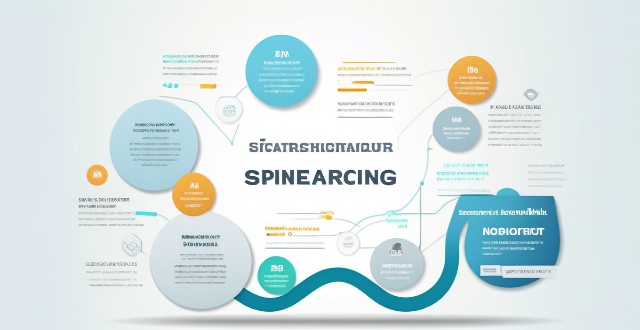Sports Sponsorship

How do different types of sports sponsorship (e.g. title sponsorship, kit sponsorship) affect a company's brand exposure ?
This text discusses various types of sports sponsorship, including title sponsorship, kit sponsorship, venue sponsorship, event sponsorship, and team sponsorship. Each type offers different impacts on brand exposure, such as high visibility, brand association, targeted audience reach, community involvement, and potential for success sharing. Overall, sports sponsorship provides companies with opportunities to align themselves with the excitement and passion of sports, reaching diverse audiences and enhancing their brand image.

Can sports sponsorship influence consumer purchasing behavior ?
Sports sponsorship is a marketing strategy that aims to increase brand awareness and positively influence consumer attitudes towards the brand. It works by providing increased exposure, building an emotional connection with consumers, enhancing the brand's image, and differentiating from competitors. The impact on consumer purchasing behavior can be direct or indirect, including immediate sales boosts, product trials, brand loyalty, and word of mouth recommendations. Measuring the impact involves analyzing sales data and tracking brand metrics. Success stories like Nike and Michael Jordan and Coca-Cola and Olympic Games demonstrate the potential of sports sponsorship. However, challenges and pitfalls exist, such as misaligned partnerships and overshadowing controversies. In conclusion, sports sponsorship can significantly influence consumer purchasing behavior when executed strategically and appropriately.

How does sports sponsorship impact the grassroots level of sports and sports development programs ?
Sports sponsorship has a significant impact on grassroots sports and sports development programs by providing financial support, resources, and exposure. Sponsorship money can be used to fund equipment, facilities, coaching, and other essential resources required for the smooth functioning of these programs. Additionally, sponsors often provide high-quality equipment, improve sports facilities, fund professional coaching, and invest in marketing and promotional activities. Sports sponsorship also provides valuable exposure opportunities for grassroots sports and sports development programs, helping them gain recognition, credibility, and attract more participants, fans, and sponsors. Overall, sports sponsorship plays a crucial role in promoting sports participation and contributing to the overall development of athletes and the sport itself.

What is the role of sports sponsorship in promoting gender equality in sports ?
Sports sponsorship is crucial for promoting gender equality in sports. It provides financial support to female athletes, increases visibility of women's sports, creates role models, and promotes equity by ensuring equal funding for both men's and women's sports. This helps break down barriers and create opportunities for female athletes to compete at the highest levels.

What is the return on investment for companies engaging in sports sponsorship ?
Sports sponsorship is a popular marketing strategy for companies to increase brand awareness, improve customer loyalty, and drive sales. However, it is important to measure the ROI of sports sponsorship activities to ensure desired outcomes are achieved. Factors affecting ROI include brand awareness, customer loyalty, and sales growth. Tips for maximizing ROI include setting clear objectives, choosing the right partnerships, leveraging digital marketing channels, and tracking results.

How does sports sponsorship influence the career opportunities for athletes and sportspersons ?
Sports sponsorship has a significant impact on the career opportunities available to athletes. It provides increased exposure and recognition, access to better training and resources, financial support and stability, and networking opportunities. However, there are potential downsides such as restrictions on endorsements or business ventures and termination of sponsorship due to declining performance or injury. Athletes should carefully consider the terms of any sponsorship agreement before committing to a deal.

How does sports sponsorship impact a brand's visibility and recognition ?
Sports sponsorship is a powerful marketing tool that enhances brand visibility and recognition. It provides increased brand exposure through prominent display, broadcasting, and media coverage. Association with positive attributes like athlete endorsements and alignment with core values improves brand appeal. Engaging target audiences through interactive experiences and social media presence further boosts brand recognition. Building loyalty and trust via community involvement and consistent association strengthens consumer relationships. Overall, sports sponsorship offers brands a unique opportunity to elevate their presence and impact their bottom line positively.

What are the potential risks associated with sports sponsorship and how can they be mitigated ?
Sports sponsorship is a popular marketing strategy used by companies to promote their brand, products, or services. However, there are potential risks associated with sports sponsorship that need to be considered and mitigated. These risks include reputational risk, financial risk, and legal risk. To mitigate these risks, companies should conduct thorough research on the athlete/team before signing a sponsorship deal, ensure alignment between the sponsor's values and those of the sponsored entity, set clear budgets for sponsorship activities, monitor the performance of the sponsored entity, negotiate flexible contract terms, and work with legal experts to ensure compliance with all relevant laws and regulations. By managing these risks, companies can maximize the benefits of their sports sponsorship investments.

How does sports sponsorship affect the overall perception of a company or brand ?
Sports sponsorship can significantly impact the overall perception of a company or brand, both positively and negatively. Positive effects include increased brand awareness, association with positive attributes, and customer loyalty and engagement. Negative effects may arise from negative associations, costly investments, and limited target audience. Companies must carefully consider the potential benefits and risks before committing to sports sponsorships.

How does sports sponsorship influence the marketing strategies of competing brands in the same industry ?
Sports sponsorship has a significant impact on marketing strategies by increasing brand awareness, differentiation from competitors, creating emotional connections with consumers, and improving public relations. Examples include Coca-Cola's sponsorship of the FIFA World Cup, Nike's partnership with Michael Jordan, Gatorade's sponsorship of Serena Williams, and Adidas' participation in Run for Peace. These benefits help brands stand out in crowded markets and are likely to continue driving investments in sports sponsorship as part of overall marketing strategies.

Can sports sponsorship help in promoting health and fitness among the general public ?
Sports sponsorship can promote health and fitness by increasing awareness, providing role models, enhancing accessibility, improving visibility, and offering educational opportunities. However, challenges such as commercialization concerns, equity issues, and sustainability must be addressed to ensure these efforts are equitable and focused on the well-being of all segments of society.

Does sports sponsorship have an impact on the fan engagement and loyalty towards a team or event ?
The influence of sports sponsorship on fan engagement and loyalty is multifaceted, with potential positive impacts such as enhanced brand visibility, improved attendance and viewership, and community involvement. However, there are also potential negative effects like overcommercialization concerns and misaligned brand values. The impact can vary based on factors including team performance and fan demographics.

How do sponsorships and advertising impact the financial stability of sports organizations ?
Sports organizations depend on sponsorships and advertising for financial stability, covering operational costs and ensuring long-term sustainability. Sponsorships provide revenue, reduce expenses, invest in infrastructure, increase attendance, and ensure long-term sustainability. Advertising generates additional revenue, increases brand awareness, expands the market, promotes merchandise sales, and enhances fan engagement. Sports organizations must seek innovative sponsorship and advertising opportunities to maintain financial stability and grow their brands.

Can sports sponsorship help in promoting environmental sustainability in sports events and infrastructure ?
The text discusses the potential role of sports sponsorship in promoting environmental sustainability in sports events and infrastructure. It outlines how sponsors can provide financial support for green initiatives, raise awareness through marketing and promotion, and drive innovation and best practices. However, it also highlights challenges such as alignment of interests, transparency and accountability, and long-term commitment. The conclusion suggests that sports sponsorship can indeed help in promoting environmental sustainability, but success requires a genuine commitment to sustainability, transparency, and long-term partnerships.

How does sports sponsorship impact the economic development of a city or region hosting major sporting events ?
Sports sponsorship has a significant impact on the economic development of a city or region hosting major sporting events. It creates jobs, stimulates the tourism and hospitality industry, promotes infrastructure development, and enhances branding and promotion. However, it is essential to consider the potential challenges and work to address them effectively.

What strategies can sports organizations employ to maximize revenue generation while maintaining fair competition within their respective leagues ?
Strategies for maximizing revenue generation in sports organizations include securing sponsorship and partnership deals, implementing dynamic ticket pricing models and fan loyalty programs, and managing player salaries and benefits effectively. These strategies aim to promote fair competition within leagues while generating additional revenue streams through corporate sponsorships, local business partnerships, media rights agreements, technology collaborations, merchandise partnerships, demand-based pricing, early bird discounts, package deals, rewards programs, membership clubs, community outreach programs, performance bonuses, contract incentives, health insurance and retirement plans, youth academy programs, college partnerships, and player loan programs.

What factors should be considered when choosing a sports event to sponsor ?
When choosing a sports event to sponsor, consider theWhen choosing a sports event to sponsor, consider theibility and exposure, alignment with Select an event that attracts a demographic that aligns with your company's target market and provides maximum visibility for your brand. Ensure that the event aligns with your company's values and mission, and fits within your budget. Evaluate the potential short-term gains and long-term benefits of sponsorship, such as increased sales, brand awareness, customer loyalty, and industry partnerships.

What role do sponsors play in sports charity events, and how do they benefit from it ?
The role of sponsors in sports charity events is crucial for the success of these events. Sponsors provide financial support, enhance brand awareness, promote corporate social responsibility, and create networking opportunities. In return, they benefit from increased exposure and brand recognition, building relationships with key stakeholders, potential tax benefits, and measurable results. Overall, sponsoring sports charity events allows companies to contribute to a worthy cause while positioning themselves as responsible corporate citizens committed to making a positive impact on society.

How do you measure the success of a sports marketing campaign ?
Measuring the success of a sports marketing campaign is crucial. Metrics include increased brand awareness, improved sales and revenue, customer loyalty, enhanced brand image, media coverage, sponsorship value, and positive stakeholder feedback. These metrics provide insights for adjusting strategies.

What should be included in a sports career plan ?
A comprehensive sports career plan should include personal information, career objectives, skill development, education & training, competition history, sponsorship & funding, off-field activities, health & wellness, post-retirement planning, and a conclusion. It serves as a roadmap to guide athletes through their journey in sports, ensuring they are well-prepared for every stage of their career.

What are some innovative ways to promote my sports facility and attract more visitors ?
Promoting a sports facility requires a combination of traditional marketing techniques and innovative strategies to stand out in a crowded market. Here are some ways you can promote your sports facility and attract more visitors: 1. Host Events and Tournaments 2. Partner with Local Schools and Clubs 3. Social Media Marketing 4. Community Outreach Programs 5. Referral Programs and Membership Incentives 6. Collaborate with Local Businesses 7. Enhance Your Online Presence

How does gender equality affect participation in competitive sports ?
Gender equality is a fundamental human right that ensures individuals are not discriminated against based on their sex. In the realm of competitive sports, gender equality can significantly influence participation rates, access to resources, and overall opportunities for athletes. This discussion will explore how gender equality affects participation in competitive sports. The importance of gender equality in sports includes equal opportunities, media coverage and representation, financial support and sponsorship, and safety and well-being. Challenges faced due to lack of gender equality include unequal participation rates, limited career opportunities, and cultural barriers. Strategies to promote gender equality in sports include policy changes, education and awareness, and supportive infrastructure development. In conclusion, gender equality plays a crucial role in determining participation rates in competitive sports. By addressing issues such as unequal opportunities, media representation, financial support, safety concerns, and cultural barriers, we can create a more inclusive environment that encourages females to engage actively in sports. Through policy changes, educational initiatives, and supportive infrastructure development, we can promote gender equality within the world of competitive sports, ensuring that talent and passion are the only determining factors for success.

How do political tensions affect the participation of countries in international sports competitions ?
The article discusses how political tensions can impact countries' participation in international sports competitions by affecting travel restrictions, safety concerns, boycotts and protests, sponsorship and funding issues, diplomatic pressure, image and reputation concerns, reduced attendance and viewership, security measures, and lost cultural exchange opportunities. It emphasizes the need to find solutions that allow sports to continue serving as a unifying force in our global community.

What role does sports play in promoting cultural diversity and inclusion ?
Sports play a significant role in promoting cultural diversity and inclusion by breaking down barriers, educating about different cultures, building communities, and contributing positively to economic development.

How can sports marketing help to build customer loyalty ?
Sports marketing is a powerful tool that can build customer loyalty by leveraging the emotional connection between fans and their favorite teams. Strategies include sponsorships, promotions, giveaways, and social media engagement to create a sense of shared identity and community among customers. Examples include Nike's sponsorship of the Brazilian national football team, Coca-Cola's partnership with the Olympic Games, Budweiser's "Up for Whatever" campaign, McDonald's "McRib" promotion during the World Series, ESPN's social media presence, and Red Bull's extreme sports content on social media channels. By establishing themselves as trusted partners of popular sports teams and events, businesses can increase customer loyalty and brand recognition.

How has augmented reality transformed fan engagement in sports ?
Augmented Reality (AR) is revolutionizing fan engagement in sports by offering immersive experiences that blend physical and digital elements. AR enhances viewing experiences with interactive overlays and virtual seats, enables in-game interaction through team and player interaction and game day activities, boosts merchandise and sponsorship opportunities with interactive ads and virtual try-ons, aids navigation and wayfinding in stadiums, and encourages social sharing through augmented selfies and virtual reality social spaces. These advancements are transforming the way fans connect with sports and teams, creating more engaging and interactive experiences.

What are the benefits of hiring a sports agent for career management ?
Hiring a sports agent can bring numerous benefits to an athlete's career management, including negotiating contracts and deals, marketing and branding assistance, legal representation, and career planning and development. By working with an experienced sports agent, athletes can focus on their performance while leaving the business side of their careers in capable hands.

What are the economic implications of the globalization of professional sports leagues ?
Globalization has significantly impacted the world of professional sports, leading to increased competition, market expansion, and financial opportunities. This phenomenon has brought about various economic implications that affect players, teams, leagues, and fans alike. One of the primary effects is the increased competition among teams and players, driving up player salaries and transfer fees. Globalization has also led to the expansion of sports markets beyond traditional borders, allowing for greater revenue generation through increased ticket sales, merchandise sales, broadcasting rights, and sponsorship deals. However, it also presents challenges and risks such as corruption, match-fixing scandals, financial instability, and the dilution of local sports traditions. Overall, addressing these challenges is crucial for the continued success and sustainability of professional sports leagues worldwide.

What role do mentorship and sponsorship play in advancing women's careers ?
Mentorship and sponsorship are essential for advancing women's careers, providing guidance, support, skill development, networking opportunities, and advocacy. However, women face challenges such as gender bias, lack of role models, and work-life balance issues. To empower women, organizations should encourage diverse mentorship pairings, promote inclusivity, provide training, and establish formal programs to facilitate these relationships.

What is the relationship between sports sponsorships and media coverage ?
Sports sponsorships and media coverage are interdependent entities that significantly impact the promotion of sporting events and athletes. This article explores their relationship, including how each influences the other and their collective impact on the sports industry. Sports sponsorships offer benefits such as increased exposure, brand awareness, targeted marketing, customer loyalty, and corporate social responsibility. Media coverage amplifies these benefits by increasing visibility, enhancing brand image, improving ROI, creating opportunities for storytelling, and amplifying promotional efforts. The relationship between sports sponsorships and media coverage is mutually beneficial, with each entity contributing to the success of the other. To maximize this relationship's benefits, sports organizations and sponsors must collaborate to create captivating stories and experiences that attract media attention and consumer interest.